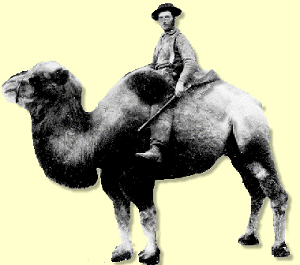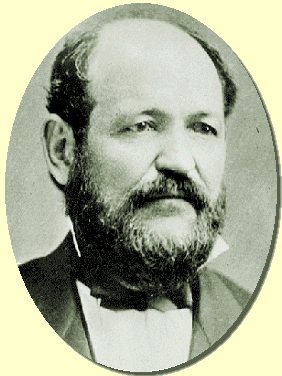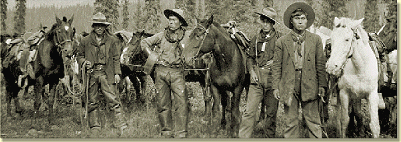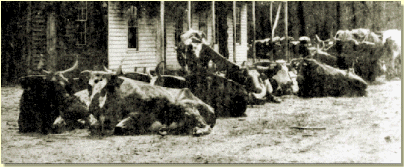Horses, Mules and Camels

|
|
BC ARCHIVES A-00347 Last of the 21 camels brought to British Columbia in 1862 to bring supplies up the Fraser River to the Cariboo gold fields |
Horses, Mules, and Camels
As British Columbia's gold rush reached it's peak in the 1860's, the strangest sight the old Cariboo Wagon Road ever saw was a string of camels headed for the Cariboo.A story in the Times-Colonist, dated May 29, 1862, claimed:
"They are now acclimated, and will eat anything from a pair of pants to a bar of soap."
21 Bactrian camels (Camelus bactrianus) were brought in because it was thought they could carry much more weight than a mule.

|
|
a_02269 Francis Willian Laumeister (1826-1891) The "Camel Man" of the Cariboo |
In 1862 Frank Laumeister, a prominent Victoria merchant and packer, brought 21 of these beasts to Yale from railroad construction camps in Arizona.
Clement Cornwall, of Ashcroft Manor comments in his journal,
"Met two Camels on the road at wh. the horses were tremendously frightened."They bit and kicked everything that moved and smelled so foul that horses and mules would bolt their lode and sometimes fall off the road to their deaths.
C.F. Cornwall Diaries, BC Archives MS -0759, pp1-149
Within four months of their introduction, a government order outlawed the camels from the Cariboo Trail.
Horses and Mules
While roads were being built in 1862, mules and horses were the main form of transportation to the gold-fields of the Cariboo. Everything was packed on animals backs, and the mule teams proved tough on the rough trails to the Cariboo. As the roads were being completed, the price of packing a mule dropped considerably.

|
|
BC ARCHIVES A-05277 Pack Train near Quesnel |
Already the price of packing from Yale to Richfield, Williams Creek, which previously been about 90 cents a pound, had dropped to 50 cents a pound. In May 1864, upon completion of the wagon road, packing a mule fell between 15 to 18 cents a pound.
Oxen
Oxen were also used to pull heavy loads of materials in to gold-fields of the Cariboo.

|
|
D-00019 CPR Contractor A. Onderdonk's Ox Team |
BS ing in 1893 meant bullslinging, driving a team of oxen pulling two or three 10 tonne freight wagons.
Mining town streets were then set out 37.5 meters wide, so that the bull teams could turn around.



|
Last updated November 30, 1998. Produced by Carollyne Yardley Industrial Art Internet Group Ltd. © 1998-1999 |
